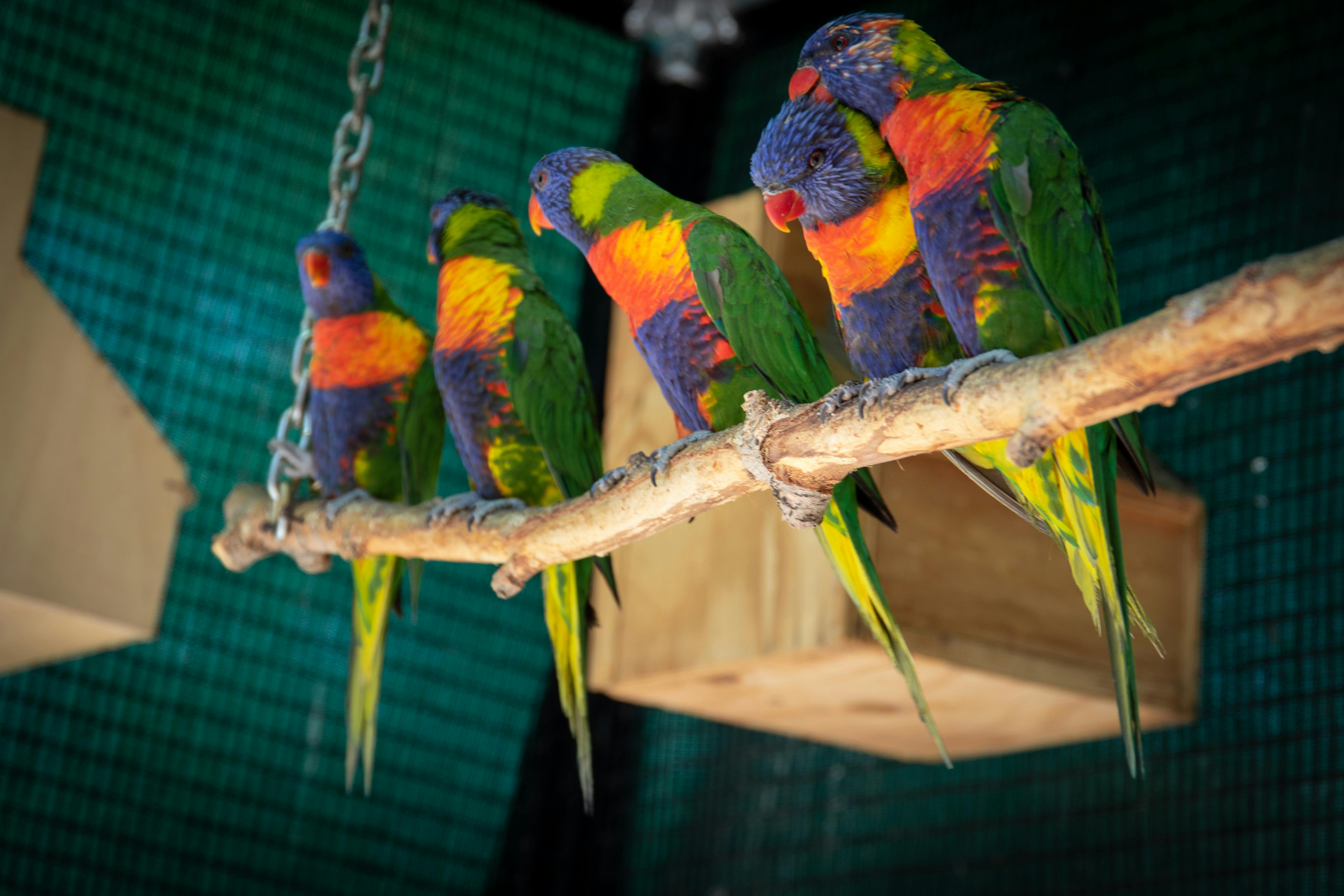Top 7 Unique Traits of Guinea Pigs vs Hamsters for Pet Lovers in 2025

Top 7 Differences Between Guinea Pigs and Hamsters You Should Know in 2025


Understanding Guinea Pig and Hamster Care
When considering small pets, it's crucial to understand the different levels of care required by guinea pigs and hamsters. Both of these popular pets have unique requirements that influence their **habitat**, **diet**, and **social needs**. Understanding these differences can ensure that you provide an ideal environment for your furry companion. In this section, we’ll delve into the fundamental care differences between these two beloved rodents.
Guinea Pig Care vs. Hamster Care
Guinea pigs typically require more space compared to hamsters. The ideal habitat for a guinea pig should be at least 7.5 square feet, while hamsters can thrive in smaller enclosures, requiring a minimum of 2 feet by 2 feet of floor space. This size difference largely stems from the guinea pig’s social nature, making them need room to engage with other guinea pigs and human caregivers. Furthermore, **guinea pig care** involves specific dietary needs, where they require a diet rich in fiber, primarily hay, alongside pellets and fresh vegetables. In contrast, **hamster care** focuses on low-sugar food, primarily seed and grain mixtures with some fresh treats.
Cleaning and Maintenance Differences
Cleaning habits for these rodents also differ significantly. **Cleaning guinea pig cages** requires a deeper approach since their cages hold more bedding and waste due to their larger size. Regular cleaning is essential to maintain hygiene and prevent illness, which is paramount for **guinea pig health issues**. For hamsters, **cleaning hamster cages** can often be done quicker because their waste accumulates in smaller amounts, thanks to their selective potty habits. Nevertheless, fresh bedding and regular spot cleaning are important for both pets to ensure a healthy living environment.
Behavioral Traits: Guinea Pig vs. Hamster
When it comes to personality, **guinea pigs** are incredibly sociable and do best in pairs or groups. Their friendly nature fosters a more interactive experience for owners, requiring a considerable amount of time for socialization. This contrasts sharply with **hamster personality**, as hamsters tend to be solitary creatures that enjoy their alone time and can be territorial. Understanding these **behavioral traits** helps potential owners choose the right pet depending on their lifestyle and ability to engage with these animals.
Size and Lifespan: Guinea Pigs vs. Hamsters
Size plays a critical role in selecting a pet since guinea pigs are generally larger than hamsters. A typical guinea pig weighs around 2 to 4 pounds and can grow to about 10 to 12 inches in length. Hamsters, on the other hand, usually weigh between 0.5 to 2 pounds and measure between 5 to 7 inches in length. Alongside size, lifespan is a significant aspect of pet ownership.
Guinea Pig Lifespan Compared to Hamster Lifespan
In the realm of longevity, **guinea pigs** typically live longer than hamsters, with a lifespan range of 5 to 7 years, given optimal care. In contrast, **hamster lifespan** averages around 2 to 3 years. This lifespan disparity can impact an owner's long-term commitment to a pet, influencing decisions about adoption and care routines. Prospective pet owners must consider these lifespan differences when selecting their new companion.
Size Comparison in Habitats
As previously mentioned, housing requirements tie directly into size. The larger **guinea pig habitat** necessitates more bedding materials and space for exercise. When building a habitat for these pets, ensuring ample room for running and exploring is essential to meet their physical and mental stimulation needs. For hamsters, although they can adapt to smaller spaces, it’s vital to design their **ideal hamster habitat** efficiently, using vertical space with levels and tunnels to keep them active and engaged.
Cost Differences: Guinea Pigs vs. Hamsters
When considering the **cost of guinea pigs vs. hamsters**, it’s essential to account for the initial setup, food, and annual vet care. Typically, the **guinea pig cost** includes a more significant initial investment in terms of cage size and food, which can add up, especially considering their dietary needs. On the other hand, **hamster costs** are often lower, but potential owners should remember to factor in continuous enrichment and health checks to avoid unforeseen expenses.
Grooming Needs and Care Techniques
Both guinea pigs and hamsters have grooming requirements that vary in intensity and frequency. Their coats and overall wellness depend on effective grooming practices adhered to by their owners, significantly impacting their health and comfort. Here, we’ll look at the grooming differences between these two rodents.
Guinea Pig Grooming Essentials
**Guinea pig grooming** usually requires regular brushing, particularly if the breed has long hair. Owners should invest in good **grooming tools** for their pigs to maintain coat health and prevent matting. Additionally, periodic nail trimming and dental care are critical aspects of their overall health management. Observational skills are vital, as noticing any signs of discomfort during grooming can lead to identifying **common guinea pig diseases** early on.
Hamster Grooming Routines
In contrast, **hamster grooming** needs are typically minimal since they are adept at cleaning themselves. Regular health checks involved during handling will help owners catch any health issues early on. Hamster owners should focus more on maintaining a clean habitat and ensuring that their **hamster grooming** is complemented by sufficient nesting materials to aid in self-maintenance. Additionally, while they rarely need baths, genus-specific considerations should be made based on their breed.
Understanding Grooming Impact on Health
Ultimately, effective grooming practices benefit both guinea pigs and hamsters greatly. Consistent grooming fosters a lasting bond while ensuring their physical health remains intact, helping owners easily spot abnormalities or behavioral changes that could signify **health issues**.
Social Needs and Interactivity with Owners
Understanding the social behavior of your pets is crucial for building a strong bond. While both guinea pigs and hamsters are rodents, their social needs and interaction styles are notably distinct, affecting how you can engage with them.
Guinea Pig Social Interaction
**Guinea pig social needs** demand that they be housed with companions, as they thrive on interaction with their species. Thus, they require both social interaction from their owners and the companionship of other guinea pigs to foster their well-being. If you're considering **adopting a guinea pig**, think about getting a pair. They communicate through various vocalizations and understanding their signs can greatly enhance your relationship with them.
Hamster Socializing Tips
In comparison, **hamster social needs** are on the lower end as they prefer solitary living. However, some species, like Roborovski hamsters, can cohabitate. When **adopting a hamster**, it’s vital to know its nature and preferences, allowing for proper handling and playtime that suits the animal's temperament. Bonding with a hamster may require more patience, as some breeds can be skittish. Nonetheless, short, positive interactions can create trust and build a connection over time.
Creating Pet-Friendly Environments
Both types of pets require environments that cater to their needs. Creating special spaces for interaction is essential; for instance, using appropriate toys, tunnels, and bedding enhances their living situation. Knowing the unique traits of each pet can lead to fulfilling their interactive needs while promoting happiness, thus making it easier to care for both **guinea pigs and hamsters** effectively.
Key Takeaways
- Guinea pigs require more space and social interaction than hamsters.
- Guinea pigs have a longer lifespan compared to hamsters.
- Grooming needs differ significantly between the two rodents.
- Understand their social dynamics to provide adequate care.
- Consider initial and ongoing costs when choosing between the two pets.
FAQ
1. What are the main dietary differences between guinea pigs and hamsters?
**Guinea pig diet** is primarily rich in fiber from hay, along with fresh vegetables and specific pellets. In contrast, **hamster diets** should be low in sugar with grains and seeds primarily, complemented occasionally by fresh fruits and vegetables to avoid dietary negligence.
2. How can I set up the ideal habitat for my guinea pig?
For an ideal **guinea pig habitat**, ensure you provide a minimum of 7.5 square feet of clean, safe space, supplemented with plenty of bedding and accessible places to hide and explore. Additionally, include chew toys for dental health and offer various forms of enrichment to keep them mentally stimulated.
3. What are the common health issues for hamsters?
**Common hamster health issues** can include wet tails, dental problems, and respiratory issues. To stay ahead with good **hamster care**, regular vet check-ups and maintaining a clean habitat are paramount.
4. How often should I handle my guinea pig?
Regular handling of your guinea pig should happen daily, ensuring it’s done gently to create a trusting bond. It's essential for expressing their sociable nature and allows them to feel cared for, which greatly contributes to their overall health.
5. Are there specific grooming tools needed for hamsters?
While hamsters primarily groom themselves, having **hamster grooming tools** like nail clippers and soft brushes can assist in promoting a healthy environment, especially if they’re actively engaging with owners during handling.
6. Can guinea pigs and hamsters coexist in the same home?
It’s not advisable for guinea pigs and hamsters to live together due to their distinct needs and behaviors. They can be housed separately in the same home but must have individually tailored environments to thrive.
7. What is the general lifespan of a guinea pig?
The average **guinea pig lifespan** ranges between 5 and 7 years under proper care. Providing a suitable environment, diet, and medical care can help maximize their life expectancy.